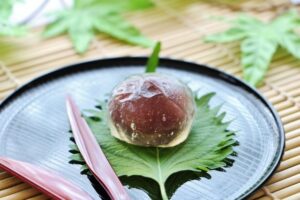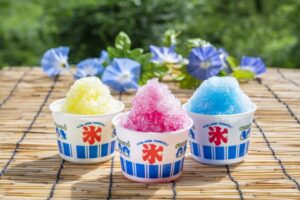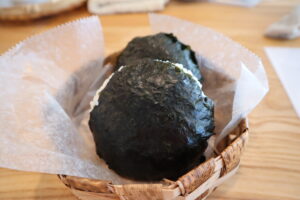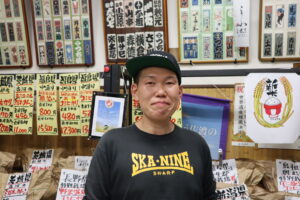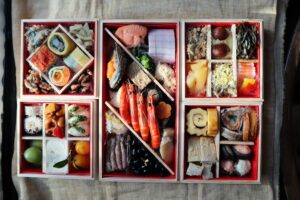I recently participated in a workshop where I learned to make a Christmas wreath and camellia-shaped nerikiri. It was a delightful experience!.
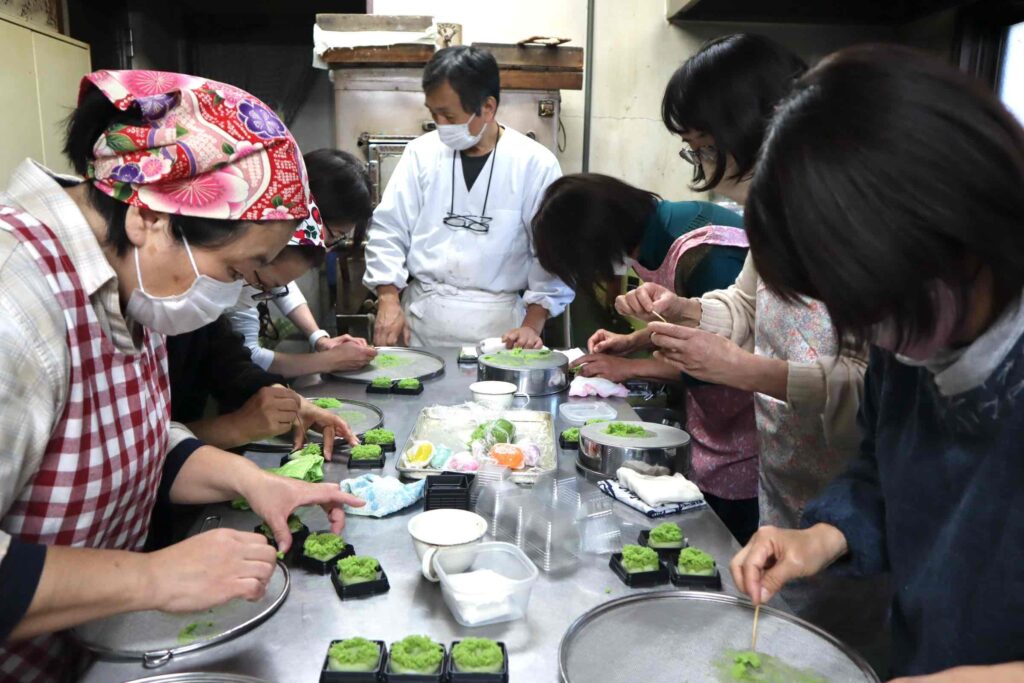
Have you ever heard of Nerikiri, a type of traditional Japanese confectionery?
Nerikiri expresses seasonal plants and events through confectionery
In Japan, there are traditional Japanese sweets (wagashi) and Western-style sweets, and wagashi is the general term for traditional Japanese sweets. It is deeply connected to the seasons, and its charm lies in the visual beauty that expresses the seasons.
In the distant past, around the year 1200 during the Kamakura period, the practice of tea ceremonies spread among the upper class. Wagashi developed as a type of confectionery served during tea ceremonies. In the Edo period, with a more stable way of life, it became popular among the general public. Nerikiri is one representative example of such traditional Japanese sweets.

Nerikiri is made from a mixture of white bean(kidney beans) paste and a binder, creating a malleable dough. It is a highly artistic confectionery featuring motifs inspired by seasonal plants and animals.
Wagashi is classified into three main types based on moisture content: namagashi (soft moist confections), han-namagashi (half-soft moist confections), and higashi (dried confections). Nerikiri falls into the namagashi category due to its high moisture content, and within that category, it is further classified as jōnamagashi (highly artistic soft confections). It is typically enjoyed during tea ceremonies or special celebratory occasions. While not a common daily snack, its small size and relatively high cost (250〜500yen)make it a treat reserved for special moments.
However, the visual beauty and craftsmanship of Nerikiri are widely respected among many Japanese people. When seasonal Nerikiri is displayed in wagashi shops or department store confectionery sections, it captivates onlookers.
Nerikiri expresses seasonal plants and events through confectionery. For example, spring might feature cherry blossoms and azaleas, summer showcases fans and morning glories, and autumn includes motifs like maple leaves and rabbits. Winter themes might include camellias, snow, and plum blossoms. Representing the four seasons, it embodies Japan’s cultural emphasis on seasonality. Notably, contemporary Nerikiri designs extend beyond traditional patterns to include themes for Halloween and Christmas.

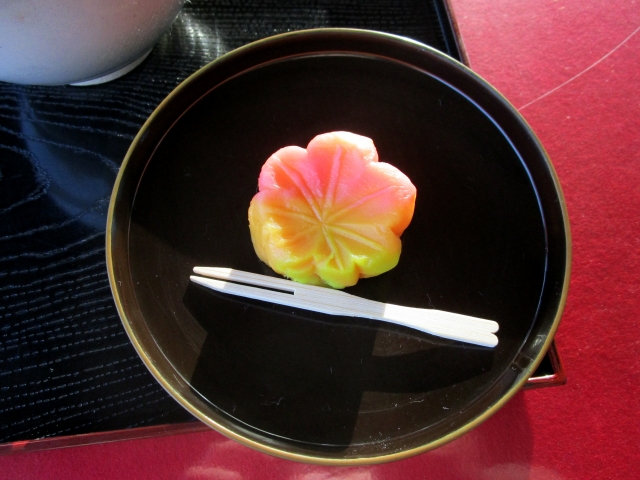
The experience of making “nerikiri” at the confectionery shop “Iidaya”
Now, let me share the experience of making “nerikiri” at the confectionery shop “Iidaya” in Tsukuno-cho, Tsurumi-ku, Yokohama City, Kanagawa Prefecture. Six of us participated in the workshop.
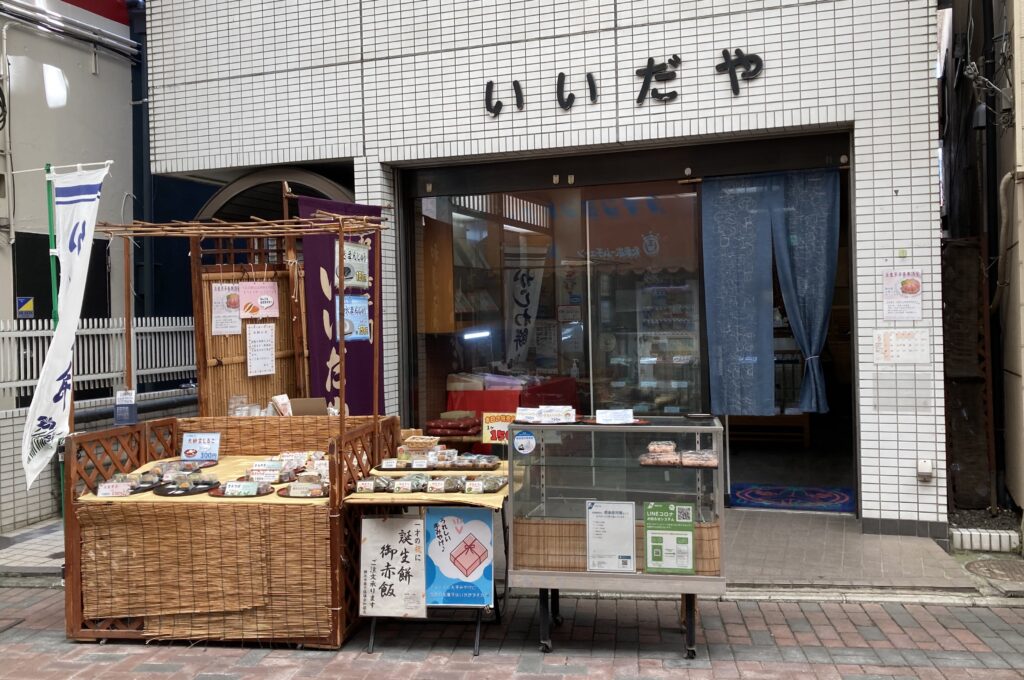
The teacher, who has been teaching it for 10 years, runs a traditional Japanese confectionery shop with their spouse in the local shopping district. As their children grew up, they became interested in nerikiri, started learning, incorporated it into their shop offerings, and eventually began teaching others. The classes are welcoming, reasonably priced, and consequently popular.
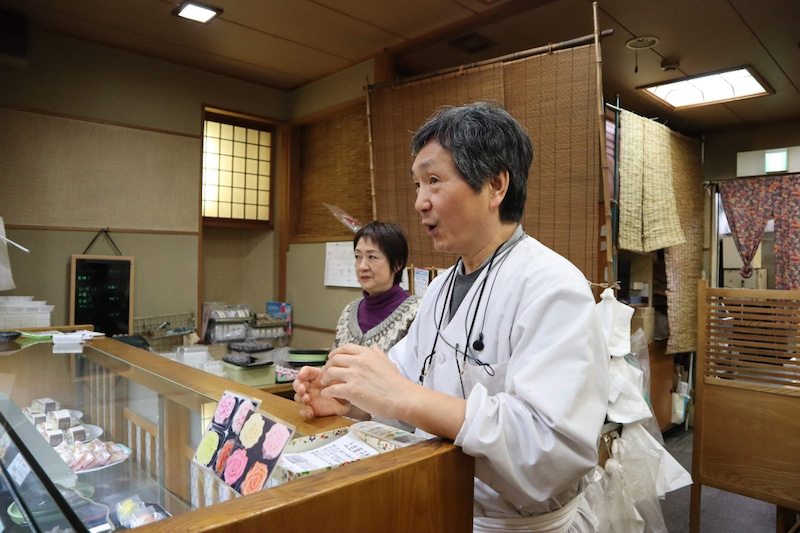
Today, we were making Christmas wreaths and camellias. The teacher mentioned that traditional tea ceremony practitioners might not appreciate nerikiri designs resembling Christmas wreaths. In the world of tea, emphasis is placed on ambiguous expressions that stimulate imagination, and vibrant colors are not typically used—usually just a couple of colors. Direct and literal expressions are also not favored.Therefore, the appreciation for Christmas wreath nerikiri is more common among the general public.
And,seasonal relevance is crucial; for December, motifs like camellias and plum blossoms are more suitable.
Let me introduce the atmosphere of the workshop.
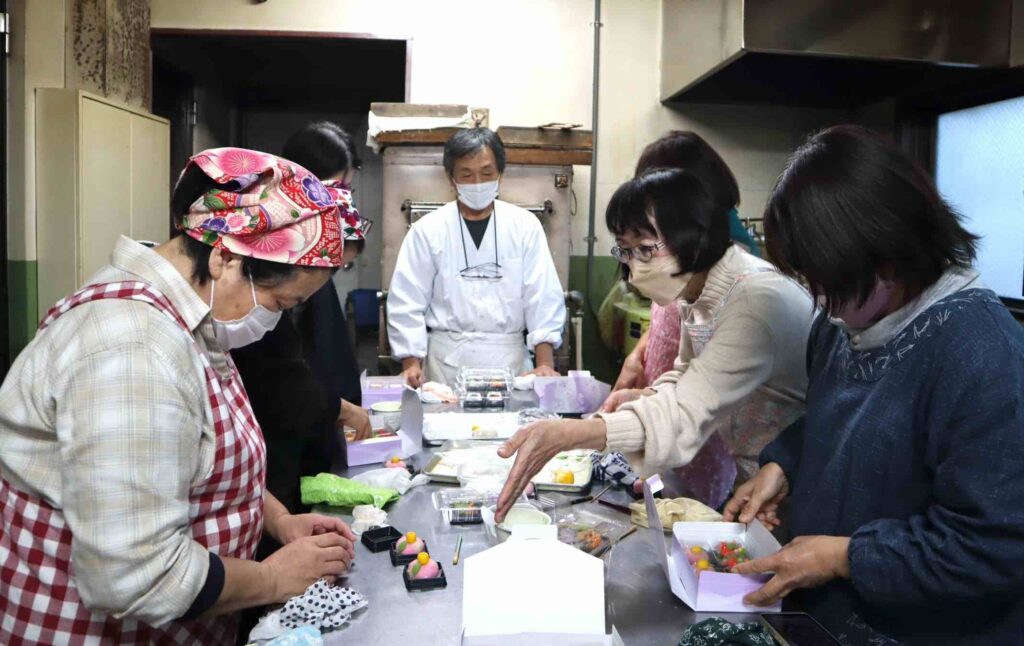
The base for nerikiri includes white sweet bean paste, Japanese yam, rice flour, and water syrup. We kneaded the ingredients to create a white dough, added food coloring to achieve the desired hues—any color is possible.
Nerikiri of Christmas wreaths
Firstly, we made Christmas wreaths. We prepared a wet hand towel.
We flattened a green-colored ball in our palms, placed sweet bean paste in the center (optional but recommended), enclosed it completely, then stretched it into a cylindrical shape. Connecting both ends, we formed a donut shape, creating the base.
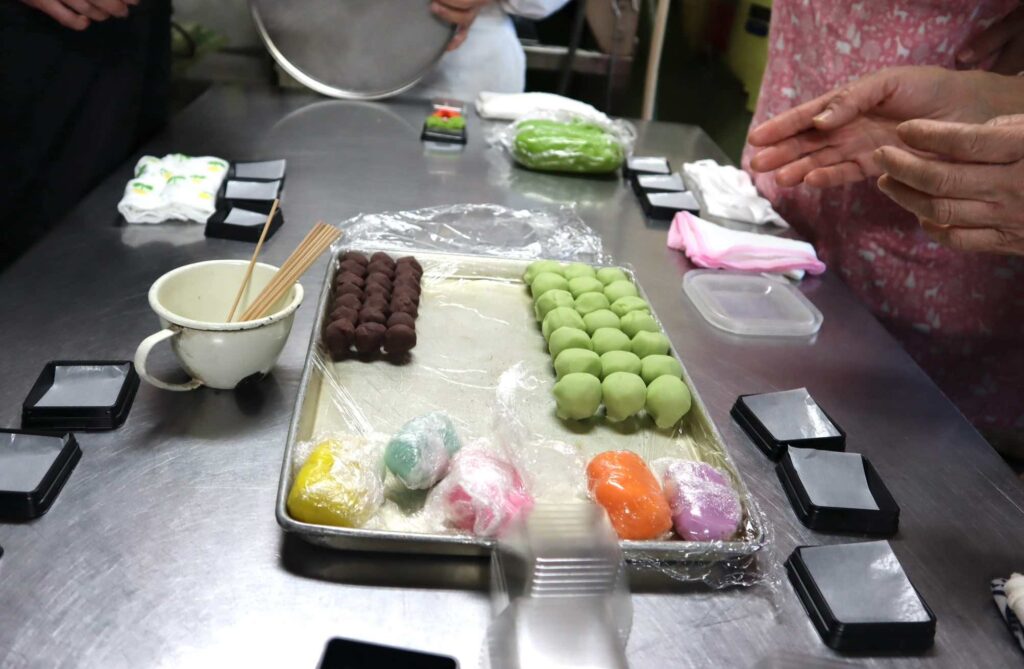
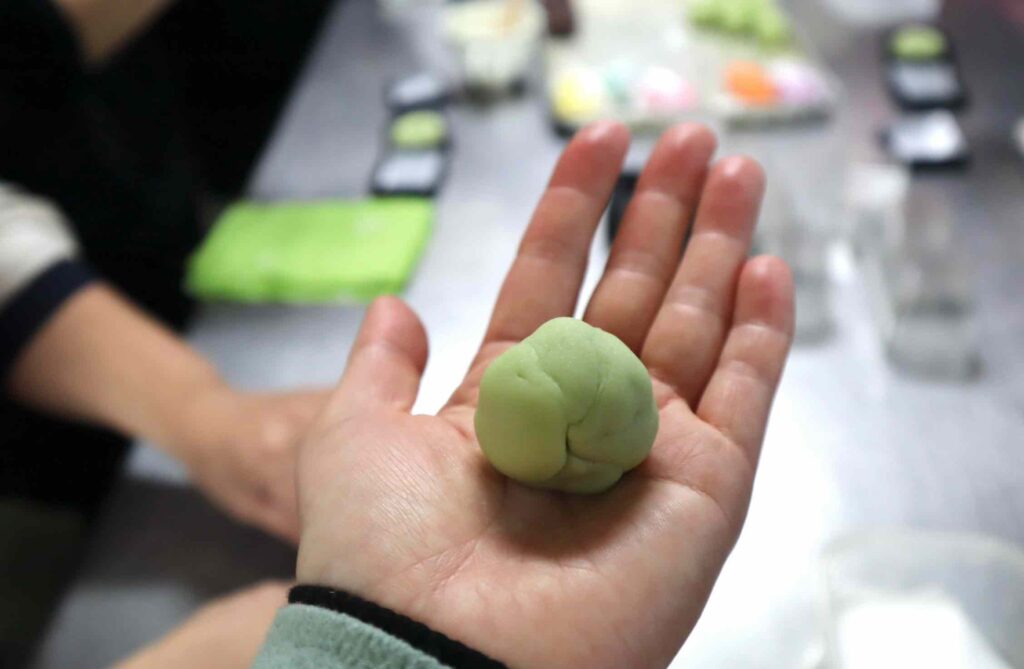
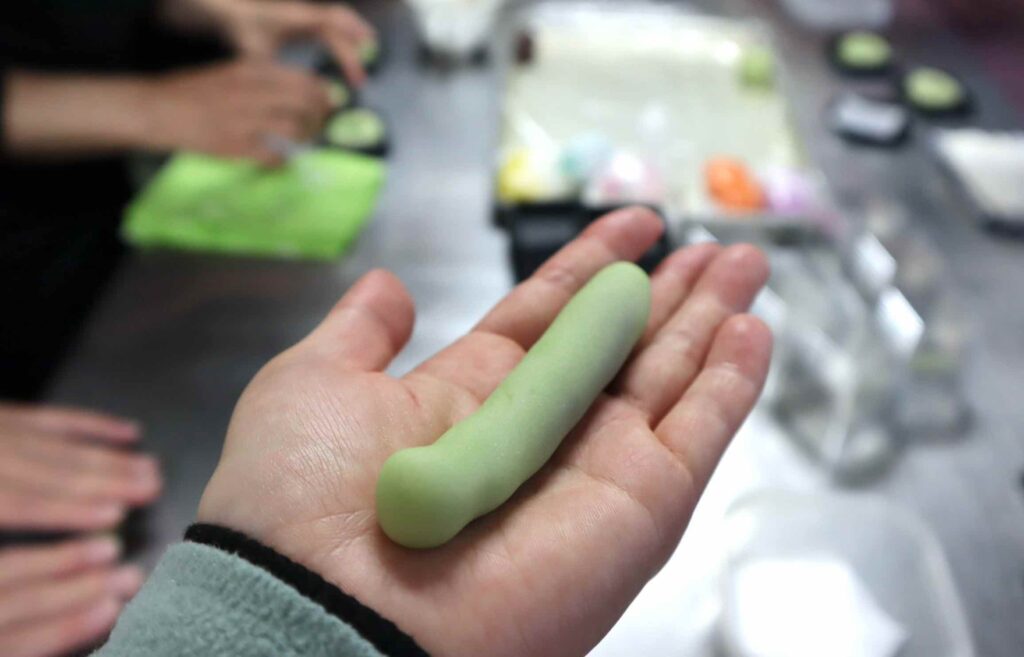
Next, we created the frilly parts of the wreath. We pressed green sweet bean paste onto a sieve, firmly pushing it through. On the other side, thin lines emerged.
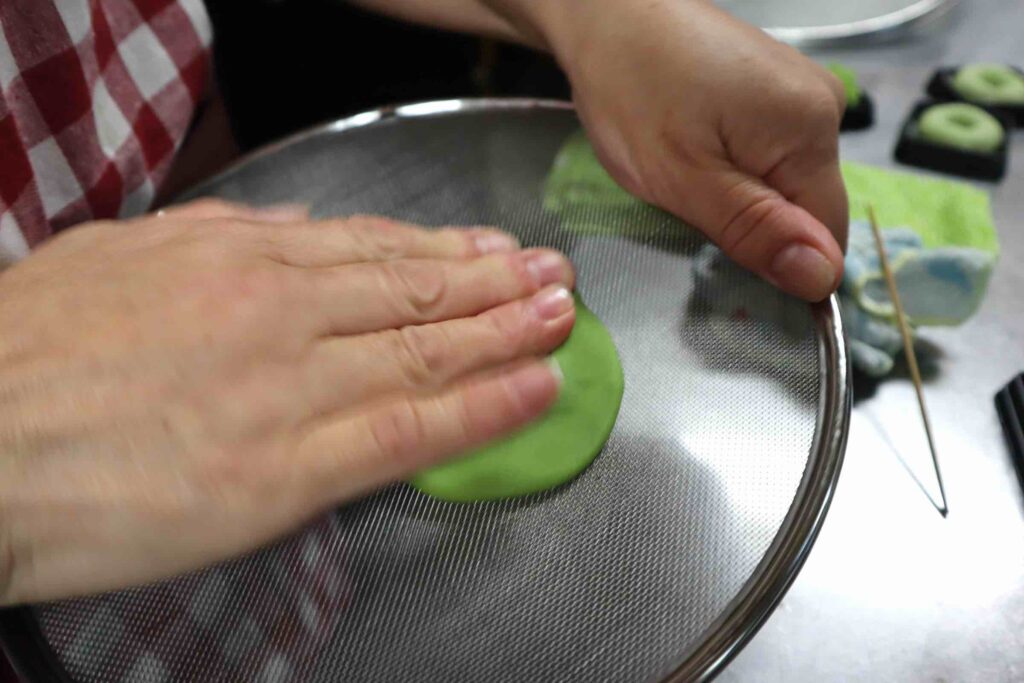
We picked up small portions from the sieve side in a circular motion and gently pressed them onto the wreath base, making sure not to use our hands—tools were essential.
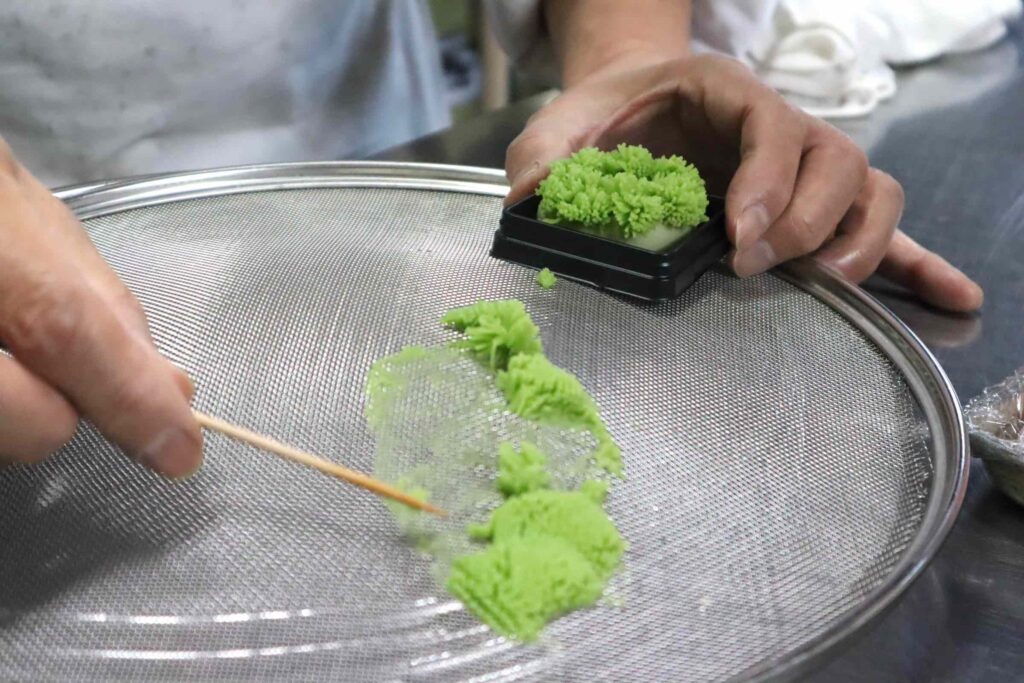
The key was to be generous with the paste; a fuller wreath looked more aesthetically pleasing.
We topped it off with a red ribbon prepared by the teacher and decorated it with yellow, pink, light blue, and orange-colored balls.
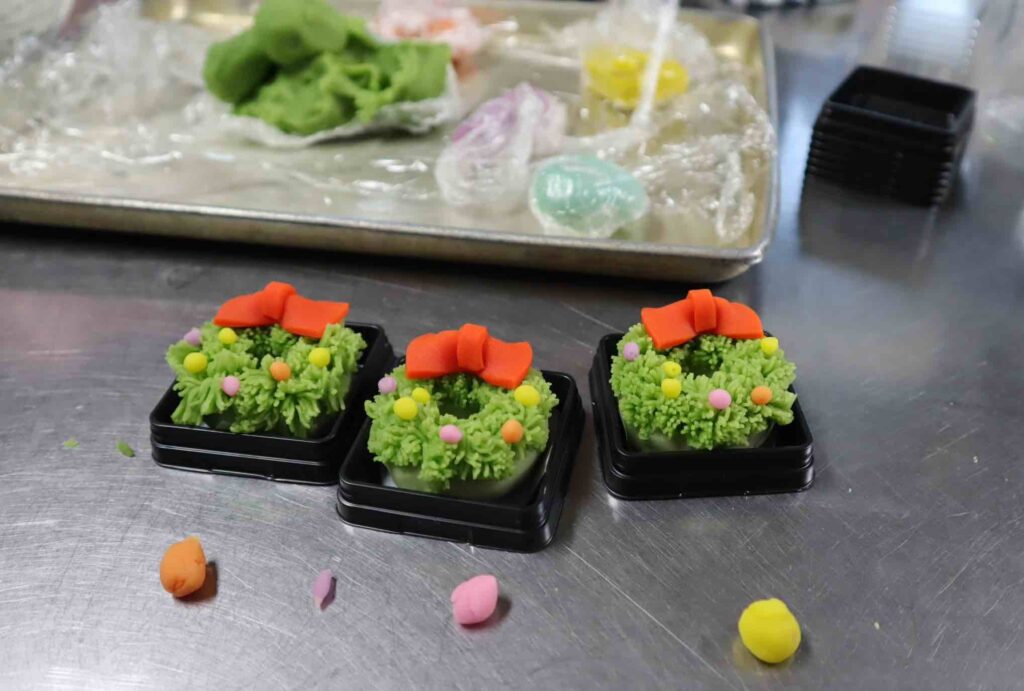
It was essential to ensure uniformity in the decorations. Crafting identical nerikiri was challenging, as consistency is crucial for confectionery items. Each Christmas wreath had to have the same shape and color. Achieving this uniformity is a significant challenge for artisans.
Now, the wreaths were completed. Each person’s creation was slightly different.
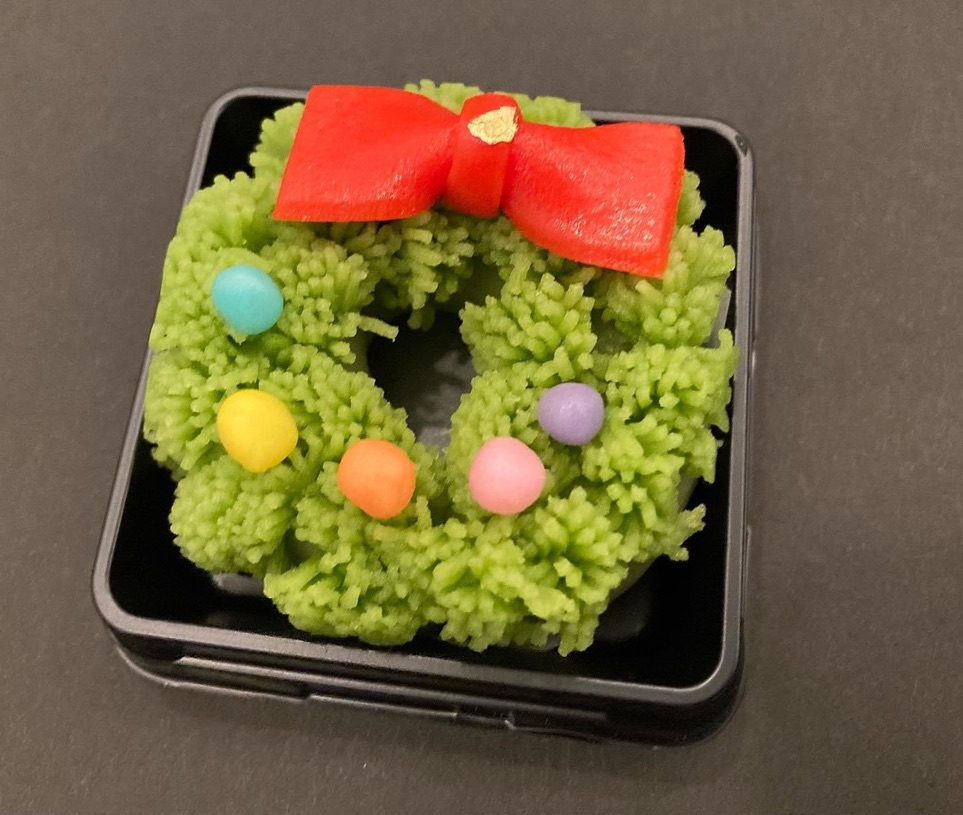
Nerikiri of camellias
Next, we made camellias, and this time, we used a special cloth called “sarashi.” Sarashi is used to squeeze out excess water.
To make camellias, we first shaped the peach-colored dough into a ball and flattened it in our palms. Then, we created three short sticks from white dough, placed them on top of the peach-colored dough, flipped it over, and pressed it down.
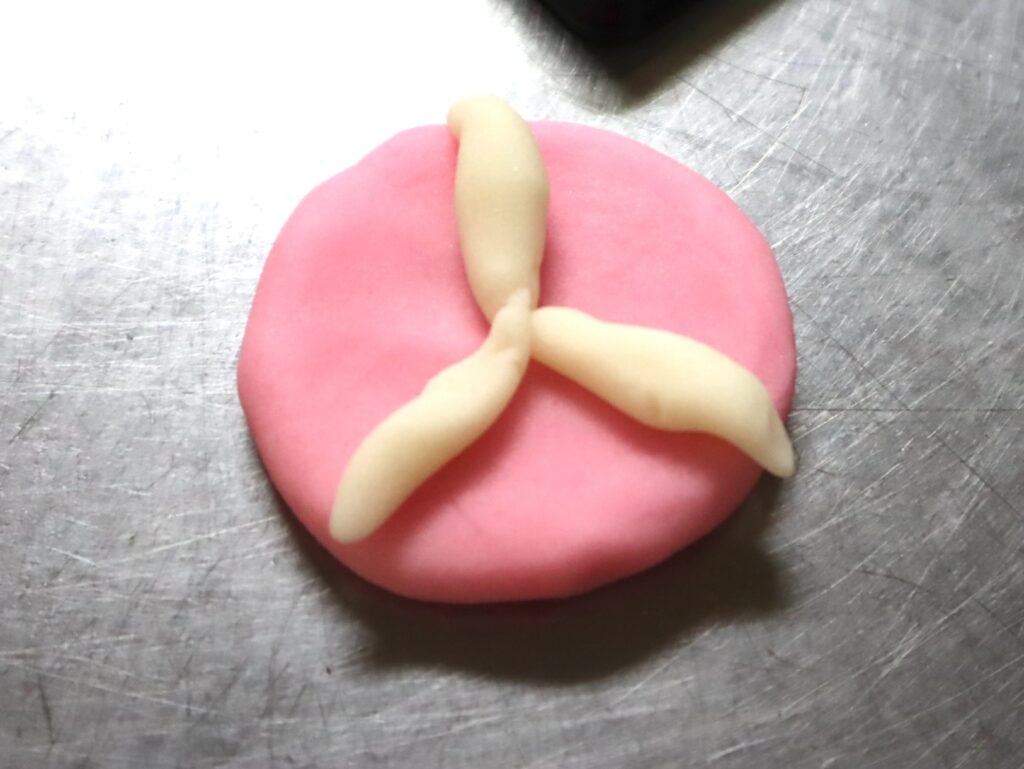
After adding sweet bean paste to the crushed dough and wrapping it, we placed it in the damp sarashi, squeezing it tightly. After squeezing, we pressed the base, creating a concave shape where the peach and white colors mixed.
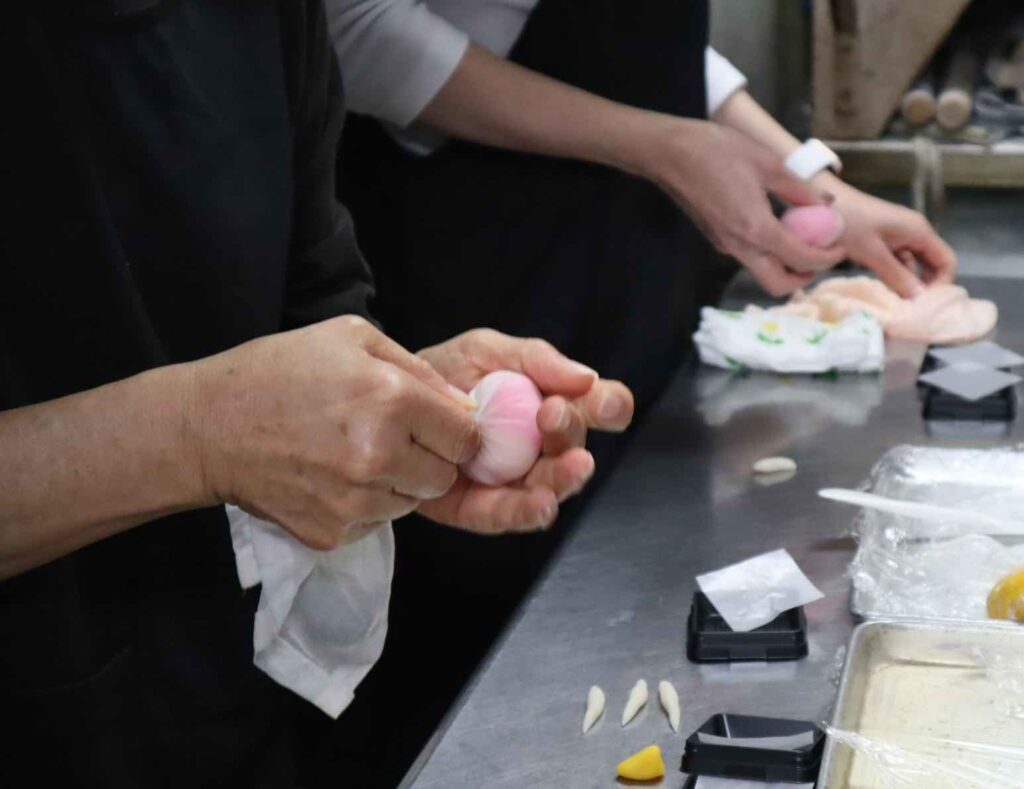
Next, we created the flower’s center by shaping yellow dough into a small cylinder, inserting a pencil-like stick to create a hole, and placing it on top of the previously made flower. This formed the flower’s core.

Finally, we added the small leaves prepared by the teacher and used a pointed tool to create vein-like patterns. All leaves faced the same direction.
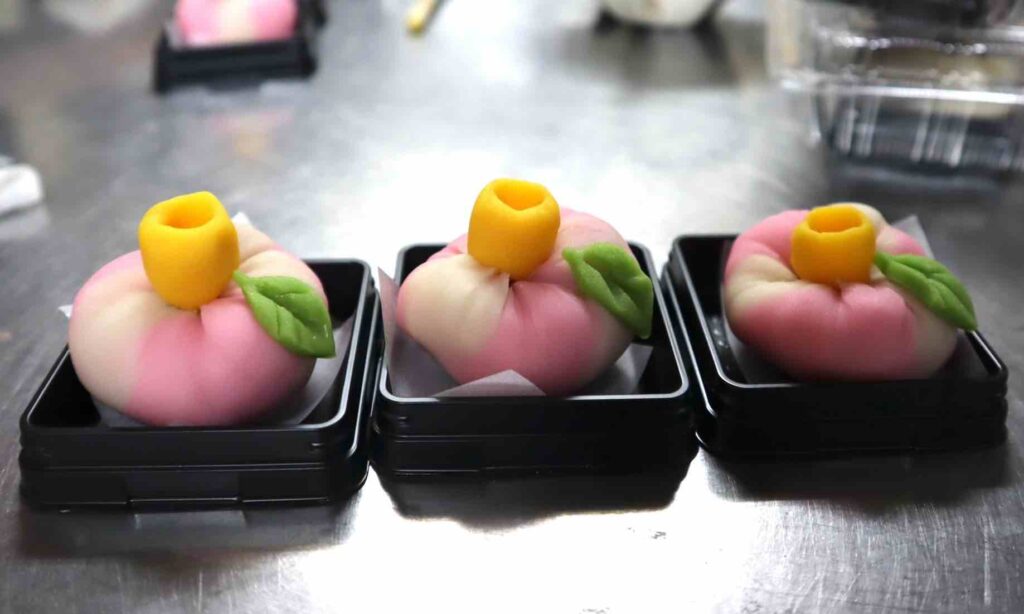
The camellias were now complete. Everyone thoroughly enjoyed the process. We made three of each type, and the entire session took about two hours. With practice, our skills improved.
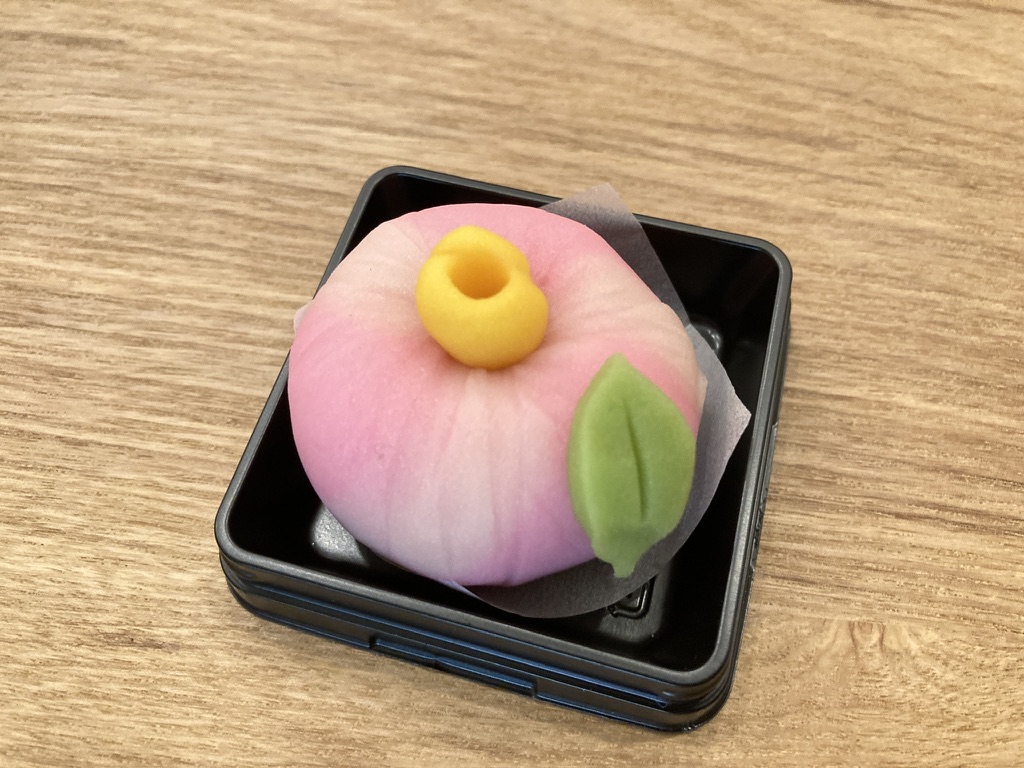
Nerikiri tends to dry quickly, so it requires careful handling. If not consumed immediately, it can be stored in the freezer.
If you’re interested, there are other places offering nerikiri classes, so feel free to explore. It’s a delightful experience.
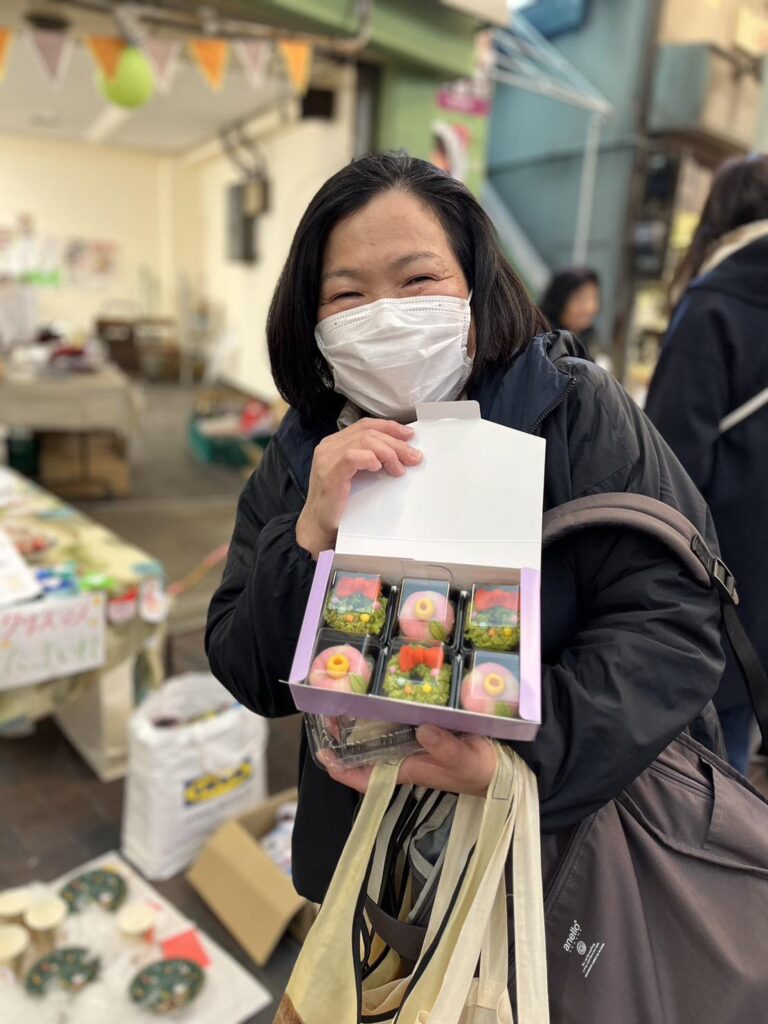
When enjoying nerikiri, it’s important to use a toothpick to cut and savor it delicately. Absolutely avoid picking it up with your hands and taking a big bite, as that’s not the proper way!




